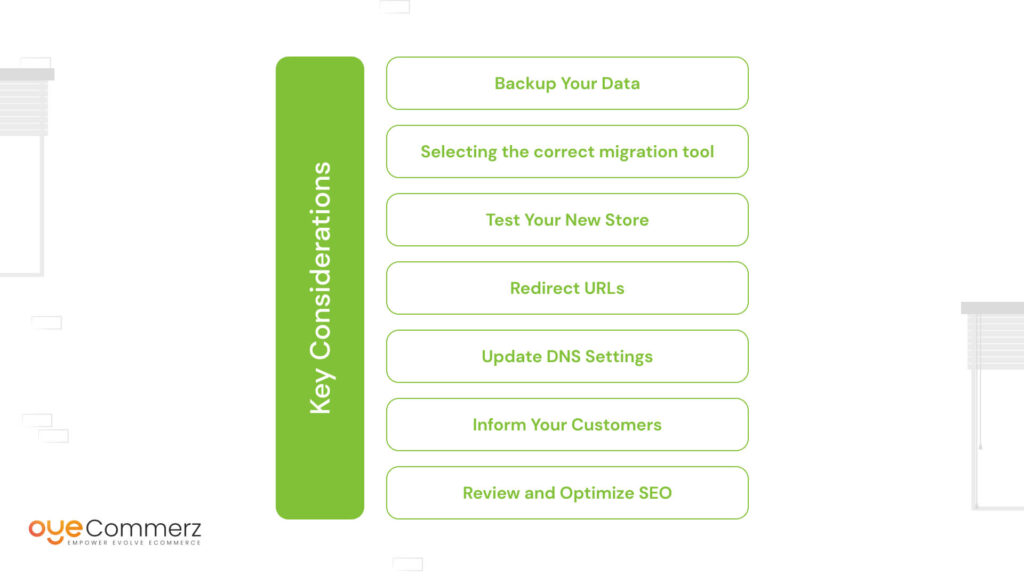In the constantly changing landscape of eCommerce, picking the right solution is essential for your business's success. If you’re currently using WP and considering a migration to an alternative, you’re not the only one. Countless businesses are shifting to take advantage of Shopify’s robust features, ease of use, and scalability. This guide will walk you through the process of migrating from WP to this platform smoothly, making sure that you realize your eCommerce potential.
Why Switch from WP to Shopify?
Before exploring the migration procedure, it’s essential to realize why this transition can be advantageous for your eCommerce business:
Intuitive Design: Shopify provides an intuitive system that streamlines store operations, making it easier for non-technical users.
Flexibility: As your company expands, Shopify can accommodate higher traffic and sales without sacrificing speed.
Integrated Features: Shopify provides integrated tools for search engine optimization, analytics, payment handling, and more, minimizing the necessity for multiple plugins.
Advanced Safeguards: With Shopify, you get access to robust security protocols that safeguard sensitive customer details.
Steps for a Effortless Migration
Migrating your online store from WordPress to Shopify includes multiple steps.
Here’s how to facilitate a smooth transition:
Outline Your Migration Strategy
Kick-off by drafting your migration blueprint. Pinpoint which components of your existing site you plan to migrate, such as:
Product data
User details
Transaction records
Posts
Choose the Best Migration Option
Depending on your needs, opt for a migration service that fits your eCommerce goals. Professional services offers multiple choices:
Entry-Level Plan: Perfect for small stores with minimal products.
Standard Migration Package: Recommended for mid-range businesses better eCommerce platform with more complex needs.
Premium Migration Package: Excellent for high-volume stores needing custom customization.
Backup Your Information
Ahead of initiating the migration, guarantee that you have a complete backup of your WP site. This task is crucial in the event anything goes off track during the transfer.
Extract Your Information from WordPress
Leverage extensions or manual methods to extract key data from your WordPress site:
Inventory
Customers
Transactions
Articles
Migrate Data into Shopify
After you have your information extracted, use Shopify’s built-in features or specialized apps to transfer your information into your updated store. Verify that all information is correctly formatted and arranged.
Personalize Your Shopify Platform
After importing information, adjust your Shopify store’s theme to match with your style. Look into working with a developer if you need complex customization.
Configure Checkout Systems and Delivery Settings
Configure payment gateways and logistics options in Shopify to facilitate a smooth purchase Shopify store customization experience for customers.
Apply Search Engine Optimization Guidelines
To keep your SEO performance during the migration:
Implement 301 link updates from existing URLs to migrated ones.
Revise metadata.
Optimize images and text for search engines.
Review Your Updated Shop
Prior to publishing, extensively review your migrated site. Look out for any errors, checkout failures, or missing data.
Launch Your Store
Once everything is in ready, it’s time to launch! Inform the transition to your customers and invite them to explore the enhanced offerings of your Shopify store.
Post-Migration Guidance
Following releasing your new store, regular assistance is key. Think about partnering with service providers who can assist with:
Technical support
Promotional campaigns
Improvement strategies
Conclusion
Migrating from WordPress to Shopify can be a transformative move for your eCommerce. By following this guide and working with tools like those offered by dedicated providers, you can guarantee a effortless transition that improves your business potential. Accept the shift and unlock the advantages of Shopify today!
